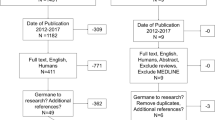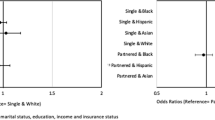Abstract
India is undergoing an epidemiological transition to non-communicable diseases (NCDs), with NCDs contributing to nearly 60 percent of all deaths in India. NCDs are challenging to manage given their silent onset, low health awareness, significant informational asymmetry, and low health-seeking behavior among the rural population and the poor in India. The Ministry of Health and Family Welfare (MoHFW), Government of India, launched Ayushman Bharat to move from a sectoral and segmented approach of health service delivery to a more comprehensive one. As part of this effort, a program was launched for population-based screening (PBS) and management of five common NCDs—hypertension, diabetes, oral, breast, and cervical cancers. The success of the program, among other things, will be determined largely by the early detection, timely treatment, and diligent follow-ups to manage the five NCDs. In line with WHO’s Global action plan for the prevention and control of NCDs 2013–2020, India is the first country to develop specific national targets and indicators aimed at reducing the number of global premature deaths from NCDs by 25% by 2025. However, challenges like human resource shortfall, limited capacities of the health workers, heavy burden of managing multiple health priorities, and poor utilization of public health facilities may affect the outcomes of this ambitious initiative Technology can serve as an enabler in solving some of these problems. Dell Technologies and Tata Trusts have partnered with the Ministry of Health and Family Welfare, Government of India, to develop a technology solution for the PBS NCD initiative. It consists of a suite of mobile and web apps on a cloud platform for health workers, doctors, and health administrators to enable care delivery for people across the country. The solution has been deployed in states across the country with adoption gaining momentum amongst health care providers. While early process indicators are encouraging, it is important to examine individual clinical outcomes, population outcomes and cost effectiveness which are the primary objectives of such a program. The learnings from this digital health program can then be transposed to similar healthcare settings. The paper covers four challenges commonly encountered in the context of running large-scale digital health programs in a multi-state, multi-facility, and multi-stakeholder system. These are adoption of technology by health workers with low digital literacy, feasibility of running tech solutions in remote areas, value proposition of the solution for users and finally the know-how on building and rolling-out technology at scale to reach millions of people.


Adapted from: NRHM Framework for implementation https://nhm.gov.in/WriteReadData/l892s/nrhm-framework-latest.pdf).
Similar content being viewed by others
References
India State Level Disease Burden Initiative Collaborators (2017) Nations within a nation: variations in epidemiological transition across the states of India, 1990–2016 in the Global Burden of Disease Study. Lancet. https://doi.org/10.1016/S0140-6736(17)32804-0
Institute for Health Metrics and Evaluation (IHME). Institute for Health Metrics and Evaluation (IHME) INDIA Profile. https://www.healthdata.org/sites/default/files/files/country_profiles/GBD/ihme_gbd_country_report_india.pdf
WHO (2018)Noncommunicable Diseases (NCD) Country Profiles
World Health Organisation (WHO). NCDs, Poverty and Development, WHO.https://www.who.int/global-coordination-mechanism/ncd-themes/poverty-development/en/
Wagstaff A (2002) Poverty and health sector inequalities. Bull World Health Org 80(2):97–105
Niessen LW, Mohan D, Akuoku JK, Mirelman AJ, Ahmed S, Koehlmoos TP, Trujillo A, Khan J, Peters DH (2018) Tackling socioeconomic inequalities and non-communicable diseases in low-income and middle-income countries under the sustainable development agenda. Lancet. https://doi.org/10.1016/S0140-6736(18)30482-3
Hazarika I (2013) Health workforce in India: assessment of availability, production and distribution. WHO South-East Asia J Public Health. https://doi.org/10.4103/2224-3151.122944
Anchala R et al (2014) Hypertension in India: a systematic review and meta-analysis of prevalence, awareness, and control of hypertension. J Hypertens 32:1170
WHO. Noncommunicable diseases: the slow motion disaster. World Health Organistation (WHO). https://www.who.int/publications/10-year-review/ncd/en/. Accessed 4 Sept 2020
Indian Council of Medical Research (ICMR) (2016) Consensus Document for the managment of Cancer Cervix. Indian Council of Medical Research (ICMR). https://main.icmr.nic.in/sites/default/files/guidelines/Consensus%20Document%20for%20The%20Management%20of%20Cancer%20Cervix_0.pdf
World Health Organization (WHO) (2013) Global Action Plan for the Prevention and Control of NCDs 2013-2020. https://apps.who.int/iris/bitstream/handle/10665/94384/9789241506236_eng.pdf?sequence=1
World Health Organisation (2015) India: first to adapt the global monitoring framework on noncommunicable diseases (NCDs). https://www.who.int/features/2015/ncd-india/en/. Accessed 3 Sept 2020
National Health Mission. Operational Guidelines on Prevention, Screening and Control of Common NCDs. Ministry of Health & Family Welfare. https://main.mohfw.gov.in/sites/default/files/Operational%20Guidelines%20on%20Prevention%2C%20Screening%20and%20Control%20of%20Common%20NCDs_1.pdf
Sharma R, Webster P, Bhattacharyya S (2014) Factors affecting the performance of community health workers in India: a multi-stakeholder perspective. Glob Health Action. https://doi.org/10.3402/gha.v7.25352
OECD. Case study- Aadhar, India. https://www.oecd.org/gov/innovative-government/India-case-study-UAE-report-2018.pdf
PwC. UPI 2.0: Towards a complete digital ecosystem. PwC India.https://www.pwc.in/consulting/financial-services/fintech/fintech-insights/upi-2-0-towards-a-complete-digital-ecosystem.html
National Health Mission. Presentations, National Consultation on Road for CPHC- through Health and Wellness Centres 8th April 2019, PPT on PBS. Nation Health Mission. https://nhm.gov.in/index1.php?lang=1&level=1&sublinkid=1304&lid=688. Accessed 2 Sept 2020
YourStory (2020) How Dell is helping India on its mission to bring preventive healthcare to 800 million people in rural India. YourStory.https://yourstory.com/2020/01/dell-helping-india-mission-healthcare-800million-rural
National Health Mission (2019) Presentations, Ayushman Bharat—Health and Wellness Centre, Third Regional Workshop, Amritsar Punjab 5th & 6th Sept 2019, CPHC NCD. National Health Mission.Sept 2019. https://nhm.gov.in/index1.php?lang=1&level=1&sublinkid=1304&lid=688. Accessed 2 Sept 2020
National Health Mission (2019) Presentations, National Health Mission Orientation Workshop (13th and 14th May 2019) NCD Interventions. National Health Mission.https://nhm.gov.in/index1.php?lang=1&level=1&sublinkid=1304&lid=688. Accessed 2 Sept 2020
National Health Mission (2019) Presentations, National Consultation on Road for CPHC- through Health and Wellness Centres 8th April 2019, NCD Screening Odisha Experience. National Health Missionhttps://nhm.gov.in/index1.php?lang=1&level=1&sublinkid=1304&lid=688. Accessed 2 Sept 2020
National Health Mission (2019) Presentations, first quartely review meeting, Dr. Ambedkar International Centre, New Delhi, 19th & 20th September 2019, First Quartely Review Meeting -MoHFW. National Health Mission.https://nhm.gov.in/index1.php?lang=1&level=1&sublinkid=1304&lid=688. Accessed 2 Sept 2020
National Health Systems Resource Centre (NHSRC). Comprehensive Primary Health Care. National Health Systems Resource Centre. http://nhsrcindia.org/sites/default/files/Operational%20Guidelines%20For%20Comprehensive%20Primary%20Health%20Care%20through%20Health%20and%20Wellness%20Centers.pdf
National Health Mission (NHM). Community Process. National Health Mission. https://nhm.gov.in/images/pdf/communitisation/asha/Orders-Guidelines/Guidelines_for_Community_Processes_2014_English.pdf
GSMA (2017) Accelerating affordable smartphone ownership in emerging markets. GSMA. https://www.gsma.com/mobilefordevelopment/wpcontent/uploads/2018/08/Accelerating-affordable-smartphone-ownership-in-emerging-markets-2017_we.pdf
Gupta S (2015) Telecommunication at the crossroads in India. IIMB Manag Rev 27:196
Jacob C, Sanchez-Vazquez A, Ivory C (2020) Understanding clinicians’ adoption of mobile health tools: a qualitative review of the most used frameworks. JMIR mHealth Uhealth 8:e18072
Modi D et al (2019) mHealth intervention "ImTeCHO" to improve delivery of maternal, neonatal, and child care services-A cluster-randomized trial in tribal areas of Gujarat. India. PLOS Med 16(10):e1002939
Modi D et al (2015) Development and formative evaluation of an innovative mHealth intervention for improving coverage of community-based maternal, newborn and child health services in rural areas of India. Glob Health Action 8:26769
National Health Mission (2018) Presentations, workshop on operationalising health and wellness centres through comprehensive primary healthcare 1st–2nd May 2018, Group3 -IT. National Health Mission. https://nhm.gov.in/index1.php?lang=1&level=1&sublinkid=1304&lid=688. Accessed 2 Sept 2020
National Health Mission (2019) Presentation, Ayushman Bharat - Health and Wellness Centre, Third Regional Workshop, Amritsar Punjab 5th & 6th Sept 2019, Chhatisgarh. National Health Mission. https://nhm.gov.in/index1.php?lang=1&level=1&sublinkid=1304&lid=688. Accessed 2 Sept 2020
Moola S, John O, Bhaumik S (2020) Encouraging health workers to use mHealth for delivering primary healthcare services: policy brief. The George Institute for Global Health. https://cdn.georgeinstitute.org/sites/default/files/documents/encouraging-health-workers-to-use-mhealth-_policy-brief_v01.pdf. Accessed 1 Sept 2020
Feroz A, Jabeen R, Saleem S (2020) Using mobile phones to improve community health workers performance in low-and-middle-income countries. BMC Public Health. https://doi.org/10.1186/s12889-020-8173-3
Dell Technologies (2016) Utilizing Design Thinking for Digital Transformation. http://i.dell.com/sites/doccontent/business/solutions/whitepapers/en/Documents/Design_Thinking.pdf
Ministry of Health and Family Welfare, Government of India. Final report on National Digital Health Blueprint (NDHB). Ministry of Health and Family Welfare.https://main.mohfw.gov.in/newshighlights/final-report-national-digital-health-blueprint-ndhb. Accessed 3 Sept 2020
Ministry of Health and Family Welfare, GoI (2016)Electronic Health Record (EHR) Standards for India. https://main.mohfw.gov.in/sites/default/files/17739294021483341357.pdf. Accessed 3 Sept 2020
Data Protection Framework (2018) Ministry of Electronic and Information Technology (MeitY).https://www.meity.gov.in/writereaddata/files/Personal_Data_Protection_Bill,2018.pdf. Accessed 4 Sept 2020
Singh S et al (2018) Functioning and time utilisation by female multi-purpose health workers in South India: a time and motion study. Hum Resour Health. https://doi.org/10.1186/s12960-018-0327-3
Bhombe I et al (2019) Time-motion study of auxiliary nurse midwives of a primary health center from Wardha District of Maharashtra. Int J Adv Med Health Res. https://doi.org/10.4103/IJAMR.IJAMR_50_18
National Health Mission (2019) Presentations, Ayushman Bharat - Health and Wellness Centre, Third Regional Workshop, Amritsar Punjab 5th & 6th Sept 2019, Haryana. https://nhm.gov.in/index1.php?lang=1&level=1&sublinkid=1304&lid=688. Accessed 4 Sept 2020
Mourtada R et al (2018) How to Supercharge Your National Digital Transformation. Boston Consulting Group (BCG). https://www.bcg.com/publications/2018/how-supercharge-your-national-digital-transformation. Accessed 4 Sept 2020
Unlocking success in digital transformations (2018) McKinsey & Company. https://www.mckinsey.com/business-functions/organization/our-insights/unlocking-success-in-digital-transformations#. Accessed 4 Sept 2020
Jones GL et al (2020) Healthcare systems & services. McKinsey & Company.https://www.mckinsey.com/industries/healthcare-systems-and-services/our-insights/promoting-an-overdue-digital-transformation-in-healthcare. Accessed 4 Sept 2020
Christine J, Antonio S-V, Chris I (2020) Social, organizational, and technological factors impacting clinicians’ adoption of mobile health tools: systematic literature review. JMIR 8(2):e15935
Author information
Authors and Affiliations
Corresponding author
Additional information
Publisher's Note
Springer Nature remains neutral with regard to jurisdictional claims in published maps and institutional affiliations.
Rights and permissions
About this article
Cite this article
Nadhamuni, S., Gupta, G., Mullath, R. et al. Leveraging Technology to Enable Effective Preventive Screening of NCDs at Population Scale: Initial Observations. J Indian Inst Sci 100, 691–700 (2020). https://doi.org/10.1007/s41745-020-00199-w
Received:
Accepted:
Published:
Issue Date:
DOI: https://doi.org/10.1007/s41745-020-00199-w




